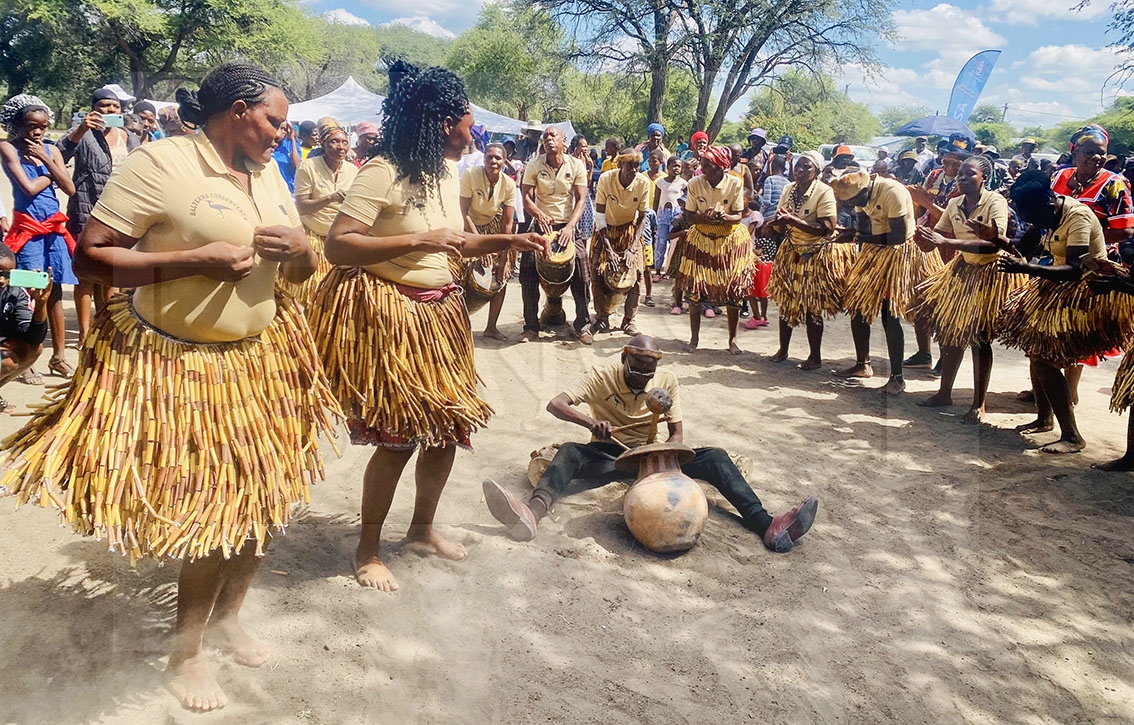Khama museum Hiden lonely treasure
17 Jun 2018
Legend has it that Kgosi Khama III of Bangwato, the renowned Khama The Great, following the failure of his cattle business, built a house to serve as a trade post and a residence for his white partners, one Smith and the other Gareth.
The house, later known as the ‘red house’ because of its red roofing, has been transformed into a Khama III Memorial Museum that harbours the history of the Khama dynasty and Serowe village, papers of famous author Bessie Head and the first inhabitants of Southern Africa known as Khoisan or Basarwa locally.
Despite its credentials, Khama III Memorial Museum is not easily identifiable neither by signage nor by its nondescript look.
Etched between Thataganyane Hill to the north and Serowe Hill to the south, the museum stands side by side with the old London Missionary Society church building to which Kgosi Khama III was a member. The building is a tourist site.
From central business district heading north to Orapa, about 300m, one takes a right turn to the east along a narrow and pothole-infested road which eventually ushers one into the museum, about a 100m away.
The museum’s curator, Scobie Lekhutlile admits management had failed in the provision of signage and general marketing of the museum since it opened its doors some 33 years ago.
Due to lack of proper signage, locating the museum was a challenge for newcomers into the village, he said.
However, the curator attributes the state of affairs to lack of resources, chiefly funds.
The museum has hitherto relied on donors such as the Danish Volunteer Service and the Norwegian Agency for Development Cooperation (Norad) both of which assisted with the establishment of the facility.
“Of course the Khama family played a key role in donating the main building which actually houses the exhibitions of the museum,” Lekhutlile said.
At the moment, the museum relies mostly on entrance fees to cover overhead costs while employees’ salaries are covered through a central government grant.
The museum employs three being the curator, assistant curator who doubles as an administration officer and a groundsman who is also the messenger as well as the tour guide. The curator and assistant are seconded from the National Museum, Monuments and Art Gallery.
In its early days of operation, the museum used to showcase new exhibitions almost every five months due to lack of enough and permanent operational space.
The practice, he reckons, got people accustomed to seeing new exhibits each time they visited until 1989 when, following the refurbishment of red house, exhibits were permanently displayed.
Owing to the custom, pre-1989 patrons still harbour expectations of finding new exhibits each time they visit.
“Sometimes it can be very very quiet,” Lekhutlile says about action at the museum. He however says in peak season, in excess of 250 clients a day require their services.
These include students who visit during school vacations, tourists and researchers who take particular interest in the history of Bangwato and African literature.
A tour of the museum led by the curator takes us to a set of papers from Khama III, Kgosi Sekgoma II, Kgosi Tshekedi and Bessie Head who continues to receive honors posthumously from her country of birth, South Africa. There are also photographs, arranged in chronological order, chronicling the genesis of Serowe development with major events and dates.
Lekhutlile observes that the papers not only attract researchers but breathe life into the museum which would otherwise rely solely on showcasing.
As the tour continues, Lekhutlile regales his listeners with stories such as how the name ‘Mmamosadinyana’, referring to the queen of England, came about. It was during the visit to England by the three chiefs, Kgosi Khama III, Kgosi Bathoen I and Kgosi Sebele I to protest Cecil John Rhodes’ plans to amalgamate Botswana into South Africa. Kgosi Sebele, astonished at the small body structure of the queen, had remarked in a somewhat demeaning tone, that they had not expected to see a ‘Mmamosadinyana’, a small woman.
He talks about Khama The Great with great awe and enthusiasm describing the Bangwato chief as an orator of note and a charismatic leader.
It was his eloquence that earned him respect from the queen and the English who would reportedly fill up London auditoriums to listen to his public addresses albeit through an interpreter, the curator reveals.
Another memorable event he relates is when the Prince of Wales visited during Kgosi Sekgoma II’s reign. Laughing heartily, Lekhutlile says the Prince of Wales ‘embarrassingly’ turned down a gift of about 700 British Pounds from morafe and instead added 300 British Pounds to help in the construction of a hospital that was to be known as Sekgoma Hospital.
The curator likens the Sir Seretse Khama marriage story to the legendary Romeo and Juliet romantic fiction. His argument is premised on the resistance the two couples endured to get their love life going.
He relates another of his stories this one involving Kgosi Tshekedi Khama who assumed regency of Bangwato tribe at the age of 20 following the death of Sir Seretse’s father Kgosi Sekgoma II who ruled briefly 1923-25.
Kgosi Tshekedi wrote to a company, I. Mendelsohn & Company, requesting it to make him a medal for which he paid six Pounds Sterling and ten Pence and then bestowed the honor upon himself when the queen reneged on her promise to do so.
The medal reportedly bore all the specifications of the one the queen had promised, the curator says.
“Pleases make me a medal to the following descriptions: solid silver, size and thickness of the enclosed medal; inscriptions (words, figures and style) to be the same as the inscription shown on the right hand corner of this letter i.e. “With God all things are possible, and a drawing of a duiker”.
The words are the motto and the duiker a tribal totem; figures and figure to stand out as in the enclosed medal, instead of being engraved; you will notice that the eye of the duiker is quite defined in the figure, and, if possible, I want a diamond eye fitted into the figure on the medal; a ribbon and pin of exactly the same style as that on the medal sent as a sample should be fitted to the medal on order, but this ribbon should be a “Union Jack” flag…,” reads the letter in part.
In the Bessie Head gallery stands a brown, wooden desk. On top of it is an antiquated typewriter that yielded famous books such as ‘When Rain Clouds Gather.’ Besides the desk is a narrow low bed that offered her freedom to pour all out.
In one of the pictures, the author is seated on the bed, cigarette sticking out of her mouth and a can of Castle beer in her hand while another seemingly empty can of beer, Lion Lager stands on the desk. To this Mr Lekhutlile says about the woman described as rich in literature but poor in life, “she loved her beer but she ultimately quit smoking.”ENDs
Source : BOPA
Author : Manowe Motsaathebe
Location : Serowe
Event : Interview
Date : 17 Jun 2018






